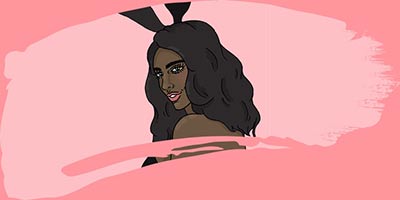babe •
A look back at how Skins’ Cassie Ainsworth became a dubious pro-ana icon for teenage girls
‘I stop eating until they take me to the hospital’
If you were a teenager at an all girls school in the noughties, you had two idols: Kate Moss in all her Pete Doherty dating, coked-out, pirate boot wearing glory, and the equally waif-like Cassie Ainsworth from Skins.
The series turned 10 years old this month, and it’s only in retrospect that you can see how massive the influence of some of its characters was. Obviously it’s tragic and boring to attack Skins for being excessive in its drug taking, casual sex having, Nu-Rave listening, Motorola Razr using depiction of noughties teenage life. Everyone saw it for what it was, an idealistic version of the drama, parties, friends, sex, clothes and music we wished were in our own boring lives.
And everyone wished they were one or another of the characters. I had a serious Effy phase, and a friend told me recently that he lived most of his teenage years dressing as day-glo ‘fuck it’ icon Chris. It’s cringe but it’s not exactly harmful, unless you were one of the sea of girls who held Cassie aloft as a an angelic pro-ana idol.
Writing for the Spectator, Anna Leskiewicz correctly points out how: It’s easy to look back now and see Skins’ portrayal of anorexia as caricatured and problematic, but back in 2007, it was quietly revolutionary. It was a time when eating disorders didn’t often occupy primetime television. There are hundreds of blog posts written by teenage girls reeling as they recognised themselves on screen, and felt less alone.
For girls who, like me, grew up in heavily female, competitive environments, Cassie was the centre of the struggle to be the thinnest and thus, the best. The scenarios Anna describes, just like the scenarios recorded on ‘recovery’ Instagrams and blogs of women in their mid-twenties who were peak-Cassie age when they were ill, resonate because we’ve lived them. It’s only in retrospect, when you’re out of that bubble, that you can understand how destructive the influence of what was, let’s remember, just a fictional character, but who nonetheless effectively became the Patron Saint of Unhealthy Eating.
Within months of Skins first airing a significant group of the girls I knew at school had replaced their patron saint Kate Moss with Cassie. A friend raided charity shops for Cassie’s gold flapper dresses and bleached her curly hair and wandered around looking exactly like the character, and eventually became so thin she spent months on an inpatient ward being treated for anorexia. Groups of girls in the year below would gather in the loos to throw up and chew green extra chewing gum and one of them was so obvious in taking her lead from Skins that everyone would only refer to her as Cassie.
Obviously you can’t blame it all on Skins. Any environment where hundreds of insecure teenage girls are thrown together for hours every day will become toxic and competitive, and often being the thinnest, rather than the smartest or the coolest, is the highest praise there is.
Recently I reminisced with a friend about how at our all girls schools we would constantly jiggle our legs under our desks (because of the theory that if you always moved, you burned more calories), how we would cut up our food into tiny portions or chew more than 40 times before you swallowed anything or take cold showers because your body had to burn calories to warm you up, and we laughed about it before realising how weird it was.
So it wasn’t all Cassie’s fault, but before her there’d never been a visible cool-girl anorexic on TV, and there’d never been one which showed you how to do it so explicitly.
For any teenage girl who had an unhealthy relationship with food, the tips and tricks Skins included in Cassie’s episodes were like hitting the jackpot. It was Cassie who explained to a Sid how to distract prying parents and concerned friends, how to convince them you were eating. Girls who wanted to learn were able to learn, easily, how to gesticulate and cut up your food and move it around and chatter constantly so nobody would notice you weren’t actually eating anything.
She was a great teacher. She taught you to drown yourself with water to fill yourself up and put weights in your underwear to appear heavier on scales. Quickly, pro-ana forums were filled with girls who wanted desperately to recreate “the Cassie diet”.
Now writers are encouraged to follow a set of strict guidelines – charities will get in touch with us encouraging things like not mentioning specific weights, being careful not to detail easy to replicate diets or techniques, or to include photos which glamorise or could be used as goals for anyone who might be triggered or inspired by someone else’s suffering. 10 years ago though, the writers of Skins were aeons away from that with Cassie. Even her easy-to-quote phrases have become immortalised forever in the black and white Tumblrs of very ill girls.
The appeal of Cassie is ironically, part of what made Skins so great. She was alluring, exciting, beautiful, different. She wasn’t the Karen Carpenter cautionary tale of anorexia people were used to, Cassie was cool. She partied. She was interesting. And so naturally, everyone wanted to be her.
In 2007, when Skins was released and bobbleheaded girls were obsessed with tiny Nicole Richie, who told guests attending her birthday party that “nobody over 100lbs” would be allowed in, Cassie fitted perfectly. Thankfully though, in 2017, with a bigger focus on self-love and more of a media awareness of how eating disorders are portrayed (and how damaging those portrayals can be), the character’s toxic influence is finally dwindling. Celebrate and cringe and reminisce about Skins as it turns 10, but don’t celebrate Cassie.











 2017 - 2024 Tab Media
2017 - 2024 Tab Media